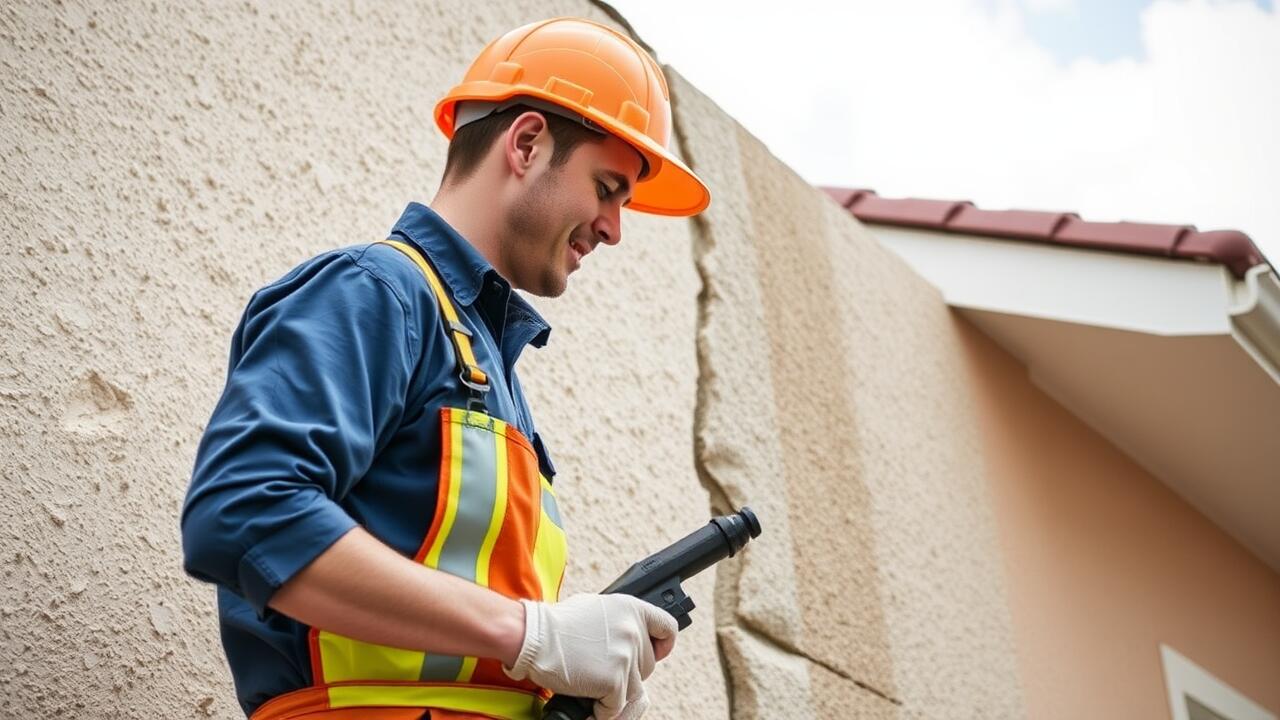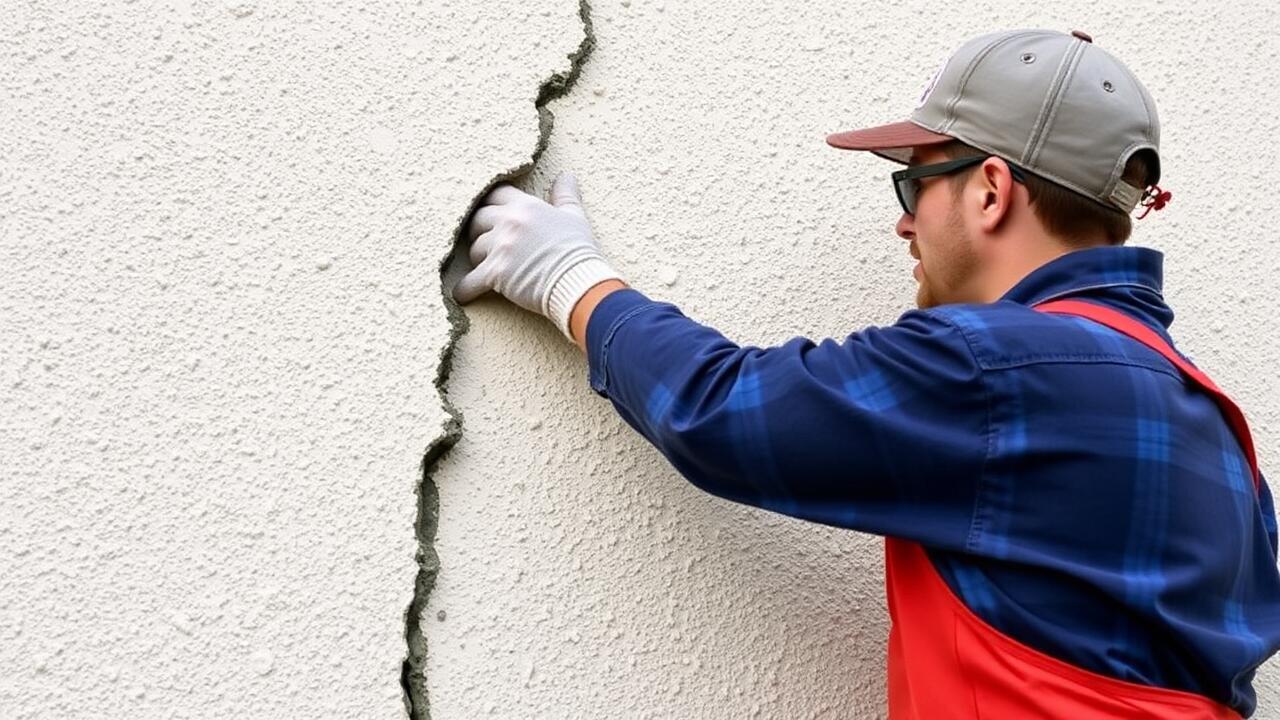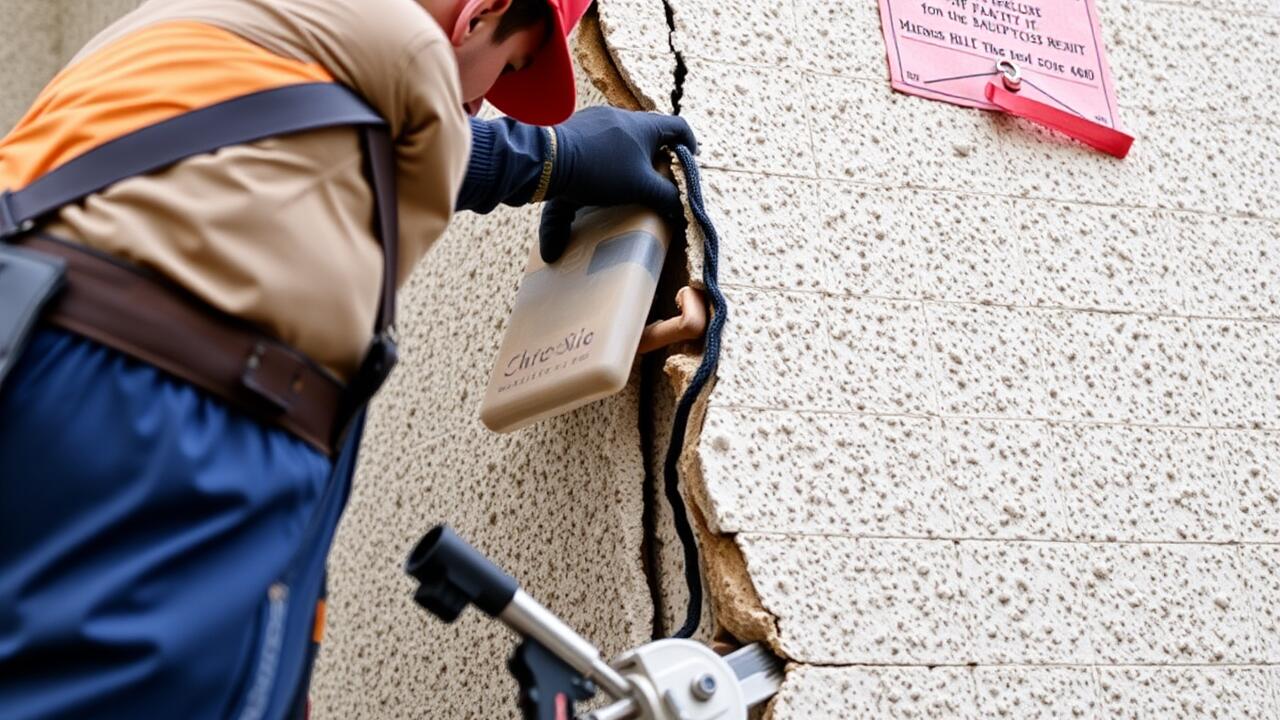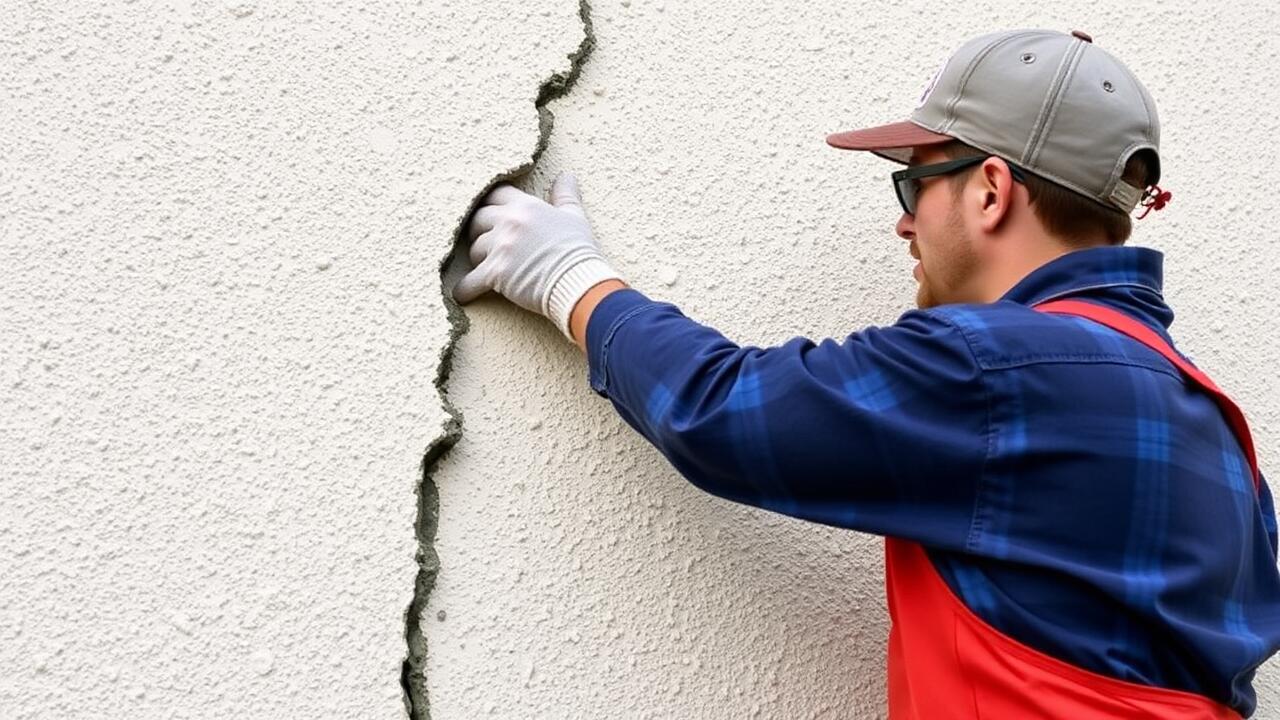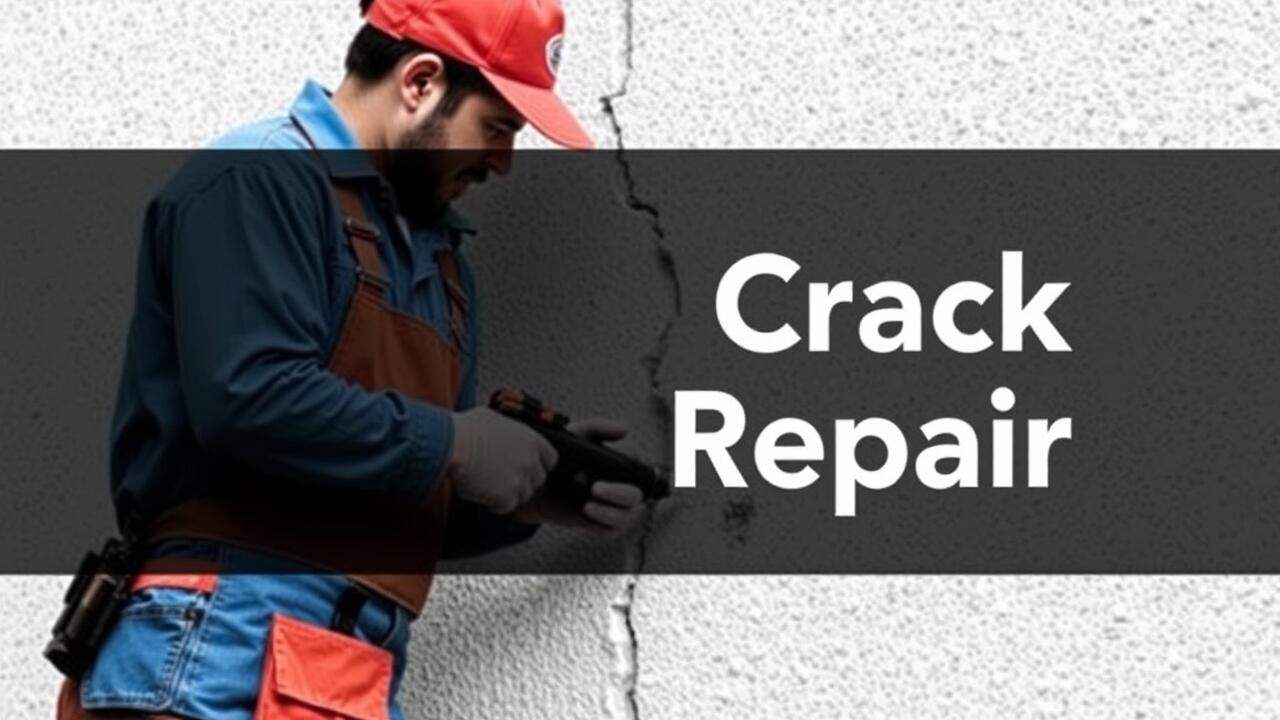
Choosing the Right Paint for Stucco
Choosing the right paint for stucco is essential to achieving a long-lasting finish. The texture of stucco can create challenges when it comes to adhesion. It is crucial to select a high-quality paint specifically formulated for textured surfaces. These paints often provide better coverage and durability against the elements, helping to protect your investment.
For those undertaking repairs, completing a Stucco Crack Repair in Pacific Palisades, Los Angeles, should precede the painting process. This ensures that the surface is prepared and uniform, allowing the paint to adhere properly. A breathable paint is also important, as it allows moisture to escape while preventing peeling and blistering. Selecting the right paint not only enhances the visual appeal but also contributes to the longevity of the stucco surface.
Factors to Consider for Best Results
Selecting the right materials is crucial for effective stucco crack repair. Assess the size and nature of the cracks before choosing a repair product. Smaller cracks can often be filled with a high-quality acrylic caulk, while larger gaps may require specific stucco patching compounds. Always ensure that the chosen repair material is compatible with the existing stucco finish. This attention to compatibility will help maintain the structural integrity of the wall and ensure a lasting repair.
Consider the climate conditions in Pacific Palisades, Los Angeles when performing repairs before painting. Humidity levels, temperature fluctuations, and exposure to sunlight can affect the drying and curing times of repair materials. Proper planning around these factors will help achieve the best results. For instance, working during mild weather can enhance adhesion and finish quality. Well-executed repairs can prevent future issues and provide a solid foundation for paint application.
Painting Over Repaired Cracks
After completing the repairs on existing cracks, it's essential to let the stucco cure completely before applying paint. This curing period allows the materials to set properly, ensuring the durability of the repair. If the cracks are not fully cured, painting over them can lead to problems such as bubbling or peeling paint. It's also crucial to match the texture of the repaired area with the surrounding stucco for a seamless finish.
When choosing paint for your stucco surface, consider high-quality options specifically designed for exterior use. These paints provide better adhesion and are formulated to withstand different weather conditions. For residents looking for exceptional results, professional services like Stucco Crack Repair in Pacific Palisades, Los Angeles, can offer expertise and quality workmanship ensuring repairs are invisible once painted. Proper preparation and the right products will enhance the overall appearance and longevity of your stucco facade.
Tips for a Smooth and Even Finish
Achieving a smooth and even finish when painting stucco requires careful preparation and application. After filling cracks, it is essential to let the repair material cure properly. Light sanding of the repaired areas can help blend them into the surrounding surface. This step minimizes noticeable transitions and creates a uniform texture, allowing the paint to adhere better.
When selecting paint, opt for high-quality products formulated specifically for stucco surfaces. These paints often contain additives that enhance durability and flexibility, accommodating minor shifts in the stucco as it expands and contracts. For optimal results, consider using a primer before applying the final coat. If you're in need of assistance, consider professionals specializing in Stucco Crack Repair in Venice, Los Angeles, to ensure the best outcome for your project.
Preventing Future Stucco Cracks
Taking proactive steps to maintain your stucco can significantly reduce the likelihood of future cracks. Regular inspections are crucial, as they allow you to catch potential issues early, preventing them from developing into larger problems. Additionally, keeping gutters and downspouts clear of debris will help direct water away from your stucco walls. This reduces moisture accumulation, which is a common factor contributing to stucco cracks.
Incorporating proper drainage systems can also aid in extending the life of your stucco. Be sure to consider sealants and waterproofing measures during maintenance, as these can complement your repair efforts. If you do encounter cracks despite prevention efforts, consider seeking professional services like Stucco Crack Repair in Pacific Palisades, Los Angeles. They can help address current issues and provide advice on long-term maintenance strategies.
Maintenance Tips for Long-Lasting Stucco
Regular maintenance is crucial for the longevity of stucco. Inspect your stucco surfaces periodically for any cracks or signs of wear. Promptly addressing minor issues can prevent larger repairs in the future. A good practice is to clean the stucco with a gentle pressure wash to remove dirt and mildew. This not only keeps the exterior looking fresh but also helps identify any potential problem areas.
When it comes to repairs, consider professional services like Stucco Crack Repair in Pacific Palisades, Los Angeles. Their expertise can ensure that any cracks or damage are fixed properly, enhancing the durability of your stucco. Additionally, applying a high-quality sealant can protect against moisture intrusion, which often leads to cracking. Regularly painting your stucco with weather-resistant paint can further extend its life and maintain its appearance.
FAQS
Why is it important to fill stucco cracks before painting?
Filling stucco cracks before painting is crucial as it ensures a smooth surface, prevents moisture intrusion, and helps the paint adhere better, resulting in a longer-lasting finish.
What type of filler should I use for stucco cracks?
It is best to use a flexible stucco or masonry repair caulk or patching compound specifically designed for exterior use, as these products can accommodate the natural expansion and contraction of the stucco.
How do I prepare the surface before filling the cracks?
Start by cleaning the area around the cracks to remove dirt and debris. Use a wire brush or scraper to remove any loose material, and ensure the surface is dry before applying the filler.
Can I paint over the cracks immediately after filling them?
No, it's recommended to allow the filler to cure completely as per the manufacturer's instructions before painting. This usually takes at least 24 hours, but it may vary based on the product used.
What are some tips for achieving a smooth finish when painting over repaired cracks?
To achieve a smooth finish, use a quality primer on the repaired areas, apply paint with even strokes, and consider using a roller for larger areas. Additionally, take care to feather out the edges of the repaired area to blend it seamlessly with the surrounding stucco.
